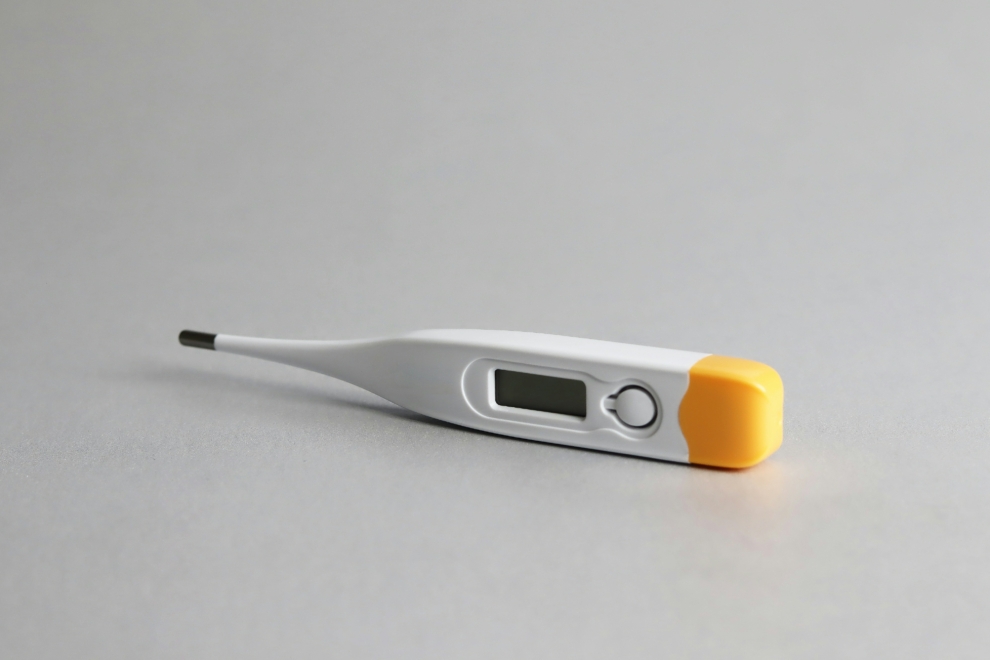
Pain is an uncompromising component and the vital cause of inconvenience in Arthritis. Very regularly, it is gentle and, after that, gets to be extreme over time. Torment levels would be consented unexpectedly depending on the arthritis an individual has. Male patient with osteoarthritis would feel throbbing pain and Warmth within the region after action. In differentiation, women with rheumatoid joint pain would walk with a gloomy, hurting torment that would heighten with rest. Errands such as strolling, writing, or opening jars are potential pain casualties that can meddle with existence.
The pain caused by joint pain is irregular as well. Now and then, an individual may feel a sudden pain, which vanishes rapidly. Torment appearance and the torment term are unpredictable. Physical movement and social life are disturbed. On the other hand, although the torment is considered slight, it is consistent throughout the period of the illness, which might, in a few cases, shoot far away, amplify past the joint, and be associated with the adjacent zones, making it exceptionally troublesome to oversee.
Finally, arthritis pain can never be seen as a stand-alone physical involvement. It has mental effects, as well. Long-term pain may lead to disappointment, defenselessness, misery, and other negative emotional states. The total treatment of joint pain torment may be a complicated process, including pharma treatment, lifestyle changes, and emotional support.
2.
One of the least favorite things about arthritis is swelling near the affected joint. In other words, the swelling results from the excessive fluid stuck in the connective tissues near the joint, the so-called “joint effusion.” This symptom is also revealed, especially in inflammatory types of arthritis, e.g., rheumatoid arthritis or gout. In some cases, it may be noticed that this swollen area has a puffy look because the part where the skin gets attached over the joint is very much stretched or extremely shiny.
Apart from the swelling, the skin might get warm and red, indicating inflammation. These may occur suddenly, thus causing concern to individuals. Sometimes, the swelling might be so serious that movement is limited, which makes moving around and stretching up very hard.
Another factor is the duration of the time the swollen area remains swollen. There are instances when a patient may feel swollen for a day or two, only to disappear after a few days. Some patients, however, may live in continuous days of swelling. If not treated properly, chronic swelling can be a very common issue. It is especially true with rheumatoid arthritis, where the immune system creates inflammation during its assaults on joint tissues.
3.
Stiffness and pain are arthritic conditions that bring much discomfort, mostly interfering with the sluggish movements of the aching joints. This usually comes after the person has been passive. Either he has fallen asleep at night or has sat in one position for an extended period. One of the most familiar symptoms of rheumatoid arthritis is morning stiffness. That usually lasts one or two hours and is particularly annoying. Thus, if the first hour of the day the person gets up, it will pass.
Stiffness comes in different levels ranging from slight restriction to complete indestructibility of joints. The pressure on the joint is perceived as slow or weak, while movement is restricted by the stiffness, which makes superficial tasks seem hard to do. Namely, people with arthritis that affects the hands will have problems picking up things, and thus, it will be difficult to stimulate a small muscle or object.
Long-term stiffness sets itself up to a person’s posture and stride. It may result in behaviors that provoke other joints and muscles. When pain and stiffness become confirmed elements of someone’s life, they initiate the vicious cycle of discomfort and immobility. A skillful combination of light, regular work, physical therapy, and some drugs increase mobility and reduce discomfort in exercising patients among the range of medications, which are the methods usually used to relieve articulation stiffness.
4.
In spite of the fact that fatigue isn’t so prominent as a pain portion within the range of complaints, the constant weariness they allude to is just one more ailment they have. Chronic fatigue disorder may be a person’s common feeling of tiredness other than the weakness experienced due to their arthritis. As the body gets weaker, the safe framework, too, has trouble guarding itself, causing exhaustion. Patients encounter depletion from immune system maladies like rheumatoid arthritis and lupus when the safe framework has been amazingly cruel in expending vitality assets.
The impeded work of the brain leads to “brain fog” and causes individuals to have issues centering, recalling things, or keeping up efficiency. It is compared to one that was done off-base or unidentifiable. It takes away the person’s chances of finding employments or keeping up individual connections. Finally, it influences the execution of day by day assignments.
Fatigue straightforwardly impacts feelings. The recognizable proof of weariness with laziness or need for inspiration is likely misconstrued, and from the start, the individual isn’t bolstered. Alternatively, one can involve repulsive sentiments by confining oneself as well and being baffled and frantic. Treating weakness that comes with arthritis includes finding out the root causes. These include aggravation, rest clutters, or push, and then using a few other ways to spare vitality and pace through the day, which makes strides the entire handle.
5.
Joints slowly lose the essential versatility to move through the whole range of movement. This may be either due to firmness of the tendons and joints or due to moderate degeneration of the cartilage. That is somewhat delicate and may abruptly collapse autonomously. Ordinarily, the joint can show up solid, and inevitably, there will be pain within the region, which gets to be a discernible issue when doing standard of living exercises.
For illustration, a individual with shoulder joint pain may got to raise his or her arms over the head. However, an individual with hip arthritis could have trouble sitting cross-legged or tying shoelaces. The limitations to physical developments might set off auxiliary exercises such as dodging a certain work or the unaffected joint overcompensating, causing more harm within the future.
It is troublesome for faculty casualties of flexibility loss to battle both physically and psychologically. Destitute portability causes individuals to see themselves as more seasoned than they are, which is able to encroach on their freedom and diminish their self-confidence. Reinforcing the influenced joints and making strides in their adaptability are reasons for the finest treatment strategies: physical treatment and reproducing the program with custom workout plans basically for the patient’s issue.
6.
The existence of tenderness in an area around the joints as common evidence of arthritis is another critical sign. This feeling results from the fact that the joints are not balanced, so they are affected by the outside when touched or pressed. It is a hypersensitivity response resulting from either an unstable joint environment or an excessive stretching of the joint capsule—attachment of pressure pain to the spots authors the caliber of pain.
Fragility in the joints can bring about other market conditions, such as Warmth and swelling. Generally, sickness can lead to autoimmune diseases. The course of the disease reveals different stages of tenderness, from mild to severe, and is characterized by the different stages of the disease and the intensity of the inflammation.
People working in an environment that demands physical activities or are physically active out of hobbies are the ones who will feel the pain more because of the problem. For instance, a musician will find it difficult to play if he gets arthritis in his fingers, and a gardener may experience extreme or intolerable pain when he turns a screw using a wrench.
7.
Joints become inflamed when fever occurs, which is the common visual symptom of arthritis. Although this is not quite common, it is still a great way to tell if a person has it. Rheumatoid arthritis (RA) and systemic lupus erythematosus (SLE) are some autoimmune types linked to high or low-grade temperatures. The immune system becomes more active. The production of low-grade fever results from an increasing number of false attacks on the body’s tissues by the immune system. The fever is not only mild but also constant, and then along with it are more systemic symptoms of fatigue and weight loss.
Fever can be a warning sign of the rise of an infection. It is because the joint is a possible site of the presence of the infection, which is called septic arthritis. This type of arthritis is urgent; doctors need to do something about it immediately. Fever in arthritis can also show that the condition is getting worse. The level of inflammation goes up, and the symptoms get worse during flare-ups of the disease.
A fever may also be the result of how arthritis is systemic, or as some would put it, is another way through which the body sends a message. It is not only the joints where the disease attacks but the entire body. Being able to recognize these symptoms and understand their significance in treating the disease on time and in the proper way, it is a must.
8.
Arthritis is the source of the heat that comes from the joint. It is one of the clear signals of arthritis experienced around the injured area of the joint. This result is the consequence of the common inflammation of arthritis. That in most cases leads to an increase in blood flow to the injured area. The Warmth that a person experiences can be weak or excessive compared to the skin around it, depending on the level of inflammation. However, this is not the end of life as we know it. It is not something most people slip in and out of when it comes to Warmth. Warmth indicates the early stages of arthritis. Thus, it should not be neglected or confused for something else.
Additionally, apart from such Warmth, warm joints can also be stiff or uncomfortable. Such effects usually happen mostly in the mornings or when the joints are resting for some time. Joint Warmth is, in particular, among the signs and a pathway to the immune system problems that ponder over the joint to gather the underlying issue. At first, the Warmth might also provide a barrier to simple activities such as washing hands, walking, and stair climbing, which feel more painful with movement as the Warmth becomes more intense.
Though joint heat is the most prominent symptom, it may also be mistaken for other infections or injuries. Therefore, one needs to check how long this sign has existed and then seek guidance from a health specialist for the real answer.
9.
Joint redness is another well-known symptom of arthritis, most common when the gut is angry (for example, in rheumatoid arthritis). The redness is a product of inflamed joints due to the increased blood flow caused by the inflammation. The affected swollen or otherwise larger joint may appear hot and reddened instead of pink or red on the skin. A close-up look at the huge change may initially scare many people, particularly when a street coin suddenly appears on the face of the joint.
Typically, redness is caused by the body’s immune system cells gearing up and attacking the joints, which results in swollen and hurt joints. Again, there are times when inflammation leads to extreme sensitivity, and hence, the patient feels unnecessary pain. This happens as simple tasks are complicated by the interaction; thus, life is of a lesser quality.
While an exterior sign, joint redness is often the first to be neglected, mistaking it for skin irritation or some other less severe problems such as slight soft tissue damage. However, the list of symptoms, which includes redness, warmness, or joint pain, can be the reason for which medical consultation should be taken.
10.The foremost common characteristic of arthritis, which the rest of the side effects can take after, is the onset of numbness, which isn’t fundamentally a typical arthritic side effect. Nerves alter amid the method of arthritis, and this leads to loss of sensation, which causes numbness. The author recommends that, in a few cases, an individual feels shivering or a prickling sensation, which can spread past the influenced zone to other parts. This individual ought to be exceptionally basic of the real reaction due to the alteration of material feedback and, hence, the loss of facilitated developments.
Numbness ordinarily goes hand in hand with maladies such as osteoarthritis and rheumatoid arthritis. They come up when the irritation or degeneration of the joint compresses nerves following it. In this case, spinal arthritis is the cause of numbness, which voyages down a band of the arm. Then again, we have said it numerous times when less development is conceivable. It makes simple errands difficult. Writing or holding objects must be at the best of the list.
Worldly and discontinuous loss of motion is additionally common. However, the seriousness of the assault of arthritis, by and large, decides it. In the event that this is the case, the patient ought never to attempt it alone. The patient may harm the nerves by doing so. In this way, the pain might get to be excruciating. Motionlessness in patients is the last thing that ought to come to intellect when the joint pain theme emerges, in spite of the fact that it goes in combined with the other indications that show the more grounded impacts of the malady within the body.